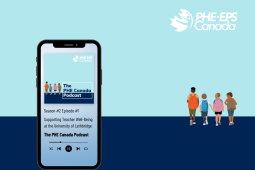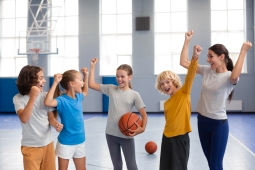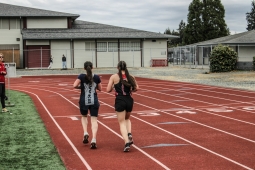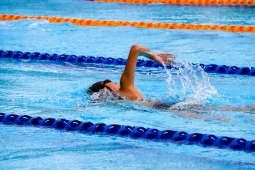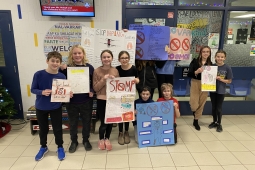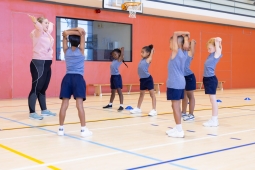Celebrating Nutrition Month: Engaging Food Literacy Activities
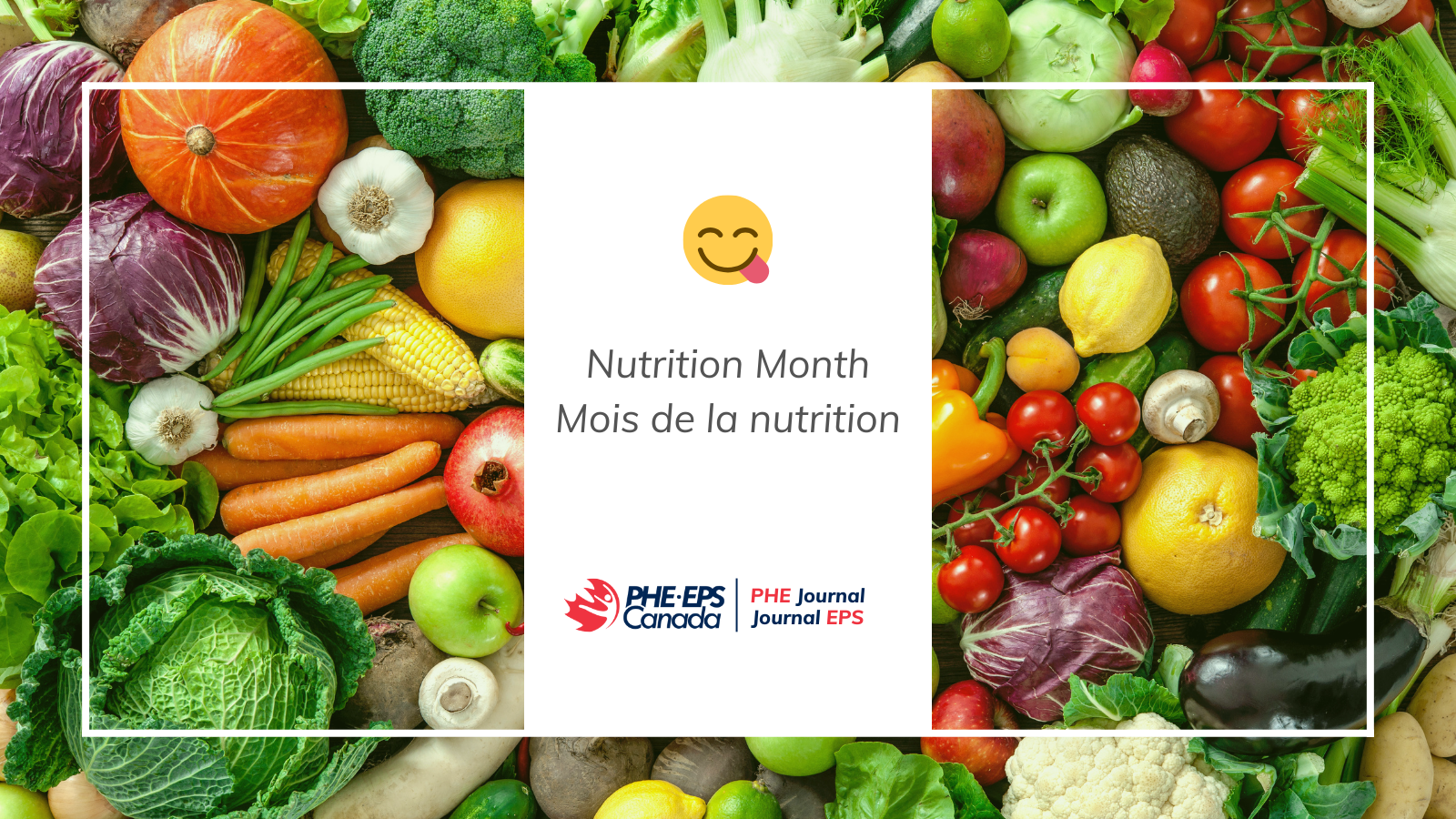
Nutrition Month is celebrated each March in Canada to bring awareness about the importance of making informed food choices and working towards healthy eating habits. To celebrate Nutrition Month 2024, we want to shine a spotlight on food literacy and how you can incorporate some fun activities into your classroom. This is a great opportunity for schools and teachers to focus on food literacy, particularly on the wholistic connections to a healthy, and active lifestyle.
What is food literacy?
The Canadian Physical and Health Education Competencies defines food literacy as “the ability to source, understand the nutritional benefits or risks, prepare and store food and be able to maintain these skills throughout life’s ups and downs. Food literacy is linked to improved diet, food habits and behaviours and the ability to manage food and maintain food security to support one’s wholistic wellbeing in keeping with potential health needs as well as social and cultural dynamics” (Davis, et al, 2023).
Why focus on food literacy?
Food literacy is more than healthy eating and understanding nutrition. It’s also about culture, tradition, and enjoyment so children can develop a positive relationship with food (FraserHealth, 2022). Cooking is an important life skill that promotes self-esteem, confidence, and a sense of achievement (Health Canada, 2019). Children are more likely to try a variety of new foods if they have been involved in preparation, but if they don’t want to try it that’s okay! Food literacy aligns with many provincial and territorial curriculums and can be incorporated into many cross-curricular subject areas such as language arts, math, science, social studies and geography.
How can I foster an environment that builds food literacy?
When students develop the attitudes, knowledge, and skills to know how to choose, grow, purchase/budget for, store, prepare, and enjoy food that best supports their health, community, and environment they are developing food literacy (FraserHealth, 2022). There are many different ways you can foster an environment that builds food literacy in your classroom:
Make food together and explore recipes!
Kitchen access isn't required to engage your students in a food literacy session. When selecting a recipe, ask for student input and aim for simple, interactive, and personalized recipes. Before starting, read and review the recipe(s) together as a class, reinforce the steps for handwashing, and discuss food safety and knife safety basics. Below are some simple and tasty ideas to consider, but it is important to be mindful of food allergies/intolerances.
Try these recipe ideas in your classroom:
- Hummus in a bag
- Fruit pizzas
- Crockpot applesauce
- Apple sandwich
- Fruit salad/kebabs
- Yogurt parfaits
- Scissor salsa
- Fresh spring rolls
- Tuna salad wraps
- Energy bites
Introduce Fun Food Literacy Activities:
A favourite classroom activity is called Guess the Spice. The teacher fills 10 different clear containers with 10 spices labelled from #1-10. Students are given a game sheet to write down their answers as they look and smell each spice. After revealing the answers, brainstorm as a class how each spice could be used while cooking. Below are a few more activities you can try:
- Food Clues – to get children to think about types of foods, where foods grow, colours of foods and how foods are eaten.
- Sample Clues – (The fewer clues you hear before guessing the more points your team receives)
- I am a vegetable (if guessed correctly after the first clue your team would receive 5 points)
- I grow under the ground
- I can be yellow, white, purple or green
- You can peel me back layer by layer
- I come in many varieties such as sweet, green, red, white and Spanish (1 point if your team hears all 5 clues)
- The Balloon and Yeast Experiment – children will learn all about yeast and why it is important when making food such as bread!
- Nutrition Scattegories – to get children thinking about different foods and kitchen products
- Mystery Bag – to get children to use their senses to identify a food
Food literacy learning examples (PHE Canada):
The Canadian Physical and Health Education Competencies recommends provincial and territorial curriculums to begin introducing food literacy concepts as early as Kindergarten to build students’ food literacy skills under the “Living Well” and “Environment and Community Connections” frameworks (pg. 31):
food literacy skills: Kindergarten
| Outcome: | I Can Exemplar: | |
| Living Well |
|
|
| Environment and Community Connections |
|
|
food literacy skills: Grades 1 - 4
| Outcome: | I Can Exemplar: | |
| Human Growth and Development |
|
|
| Living Well |
|
|
| Environment and Community Connections |
|
|
food literacy skills: Grades 5 - 8
| Outcome: | I Can Exemplar: | |
| Living Well |
|
|
| Environment and Community Connections |
|
|
food literacy skills: Grades 9 - 12/CEGEP
| Outcome: | I Can Exemplar: | |
| Living Well |
|
|
| Environment and Community Connections |
|
|
If you are looking for other ideas to incorporate food literacy in your Physical and Health Education lessons, we encourage you to explore the variety of food literacy learning examples within the Canadian Competencies for Physical and Health Education and the PHE Learning Centre:
Kindergarten - Grade 3
Grade 4-6
Grade 7-12
Additional Resources - Check out these other food literacy resources:
- Teach Nutrition
- Food is Science
- Sustain Ontario
- Farm to Cafeteria Canada
- Nourish Nova Scotia
- Adventures in Cooking
- Bright Bites
- Unlock Food
References:
Davis, M., Gleddie, D.L., Nylen, J., Leidl, R., Toulouse, P., Baker, K., & Gillies, L. (2023). Canadian physical and health education competencies. Ottawa: Physical and Health Education Canada.
FraserHealth. (2022). 5 ways to teach your kids food literacy this summer. Retrieved from https://www.fraserhealth.ca/news/2022/Jun/5-ways-to-teach-your-kids-food-literacy-this-summer#:~:text=Food%20literacy%20means%20having%20the,to%20budget%20for%20food%20shopping
Government of Canada. (2022). Tricks to not get sick: Food safety for kids. Retrieved from https://www.canada.ca/en/health-canada/services/video/tricks-not-get-sick-food-safety-kids.html
Government of Canada. (2020). Hand-washing heros. Retrieved from https://www.canada.ca/en/public-health/services/video/covid-19-hand-washing-heroes.html
Health Canada. (2019). Canada’s dietary guidelines for health professionals and policy makers. Retrieved from https://food-guide.canada.ca/en/guidelines/section-3-importance-food-skills/
North Bay Parry Sound District Health Unit, Public Health Sudbury & Districts, Thunder Bay District Health Unit. (2022). Adventures in Cooking: A Hands-On Cooking Program.




